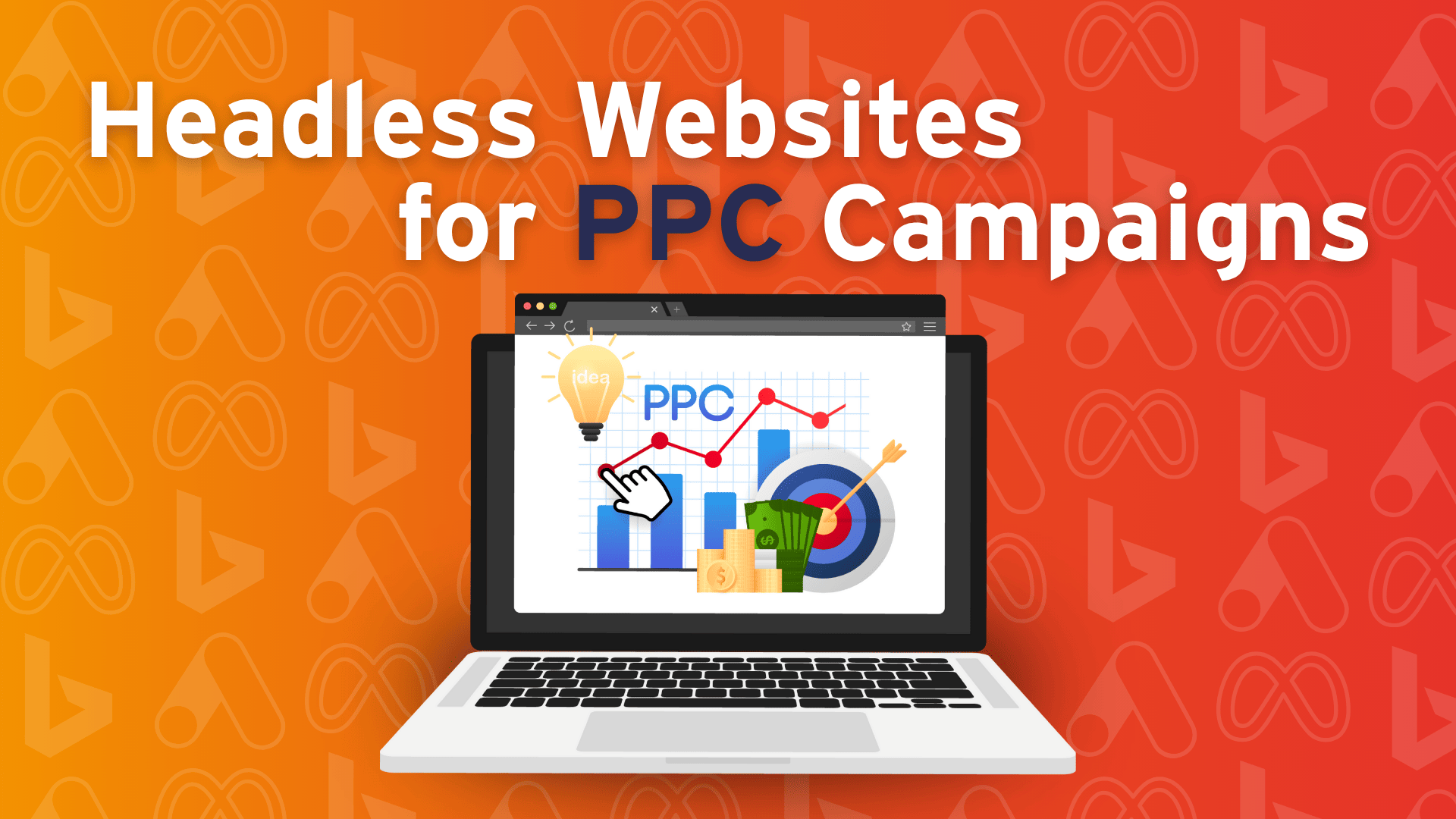Guides

Why Headless Websites are great for PPC Ads
By Lauren Williams
22 Jul 2025 • 4 min read
Share this post

Running pay-per-click (PPC) ads is a great way to bring in new leads, but if your website isn’t built to convert those clicks into discovery calls, your budget can disappear fast. That’s why small business owners need a strategic system, not just a website, to make sure every ad spend leads to real conversations with their highest-paying clients.
If you’ve never heard the term before, don’t worry! This blog will walk you through what they are and why they’re perfect for getting the most from your PPC campaigns.
TL;DR
- Headless websites load faster and give you more control over how your pages look and behave.
- They help your PPC ads perform better by keeping visitors on the page and increasing conversions.
- You can build landing pages more quickly and test them easily.
- They are more secure and less likely to crash when you get lots of traffic.
What is a Headless Website?
Think of a traditional website like a restaurant with a kitchen and a dining area in one space. A headless website is like getting a takeaway, where the kitchen is in one building (where content is managed), and the your dining area at home is in another (what users see), but they’re connected by delivery drivers (APIs).
Why This Matters for PPC Ads
When someone clicks your ad, you’ve only got seconds to win them over. If the page doesn’t make it easy to take the next step, like booking a discovery call, the opportunity is lost. The Mativus Platform ensures every page is optimised to keep visitors engaged and guide them towards booking with you.
Here’s how headless websites help:
- They load really fast – so visitors don’t leave straight away.
- They’re more flexible – so you can match your landing page exactly to the ad.
- They help you improve your quality score on Google Ads – which can lower your average cost per click.
What is Ad Quality Score?
Ad Quality Score is a diagnostic tool in Google Ads. It is rated on a scale of 1 to 10 for each keyword you are targeting in your campaign, which assesses the overall quality and relevance of your ad to the keywords that you are targeting.
It’s determined by three main factors: your expected click-through rate (CTR) (how likely people are to click your ad), ad relevance (how well your ad matches the user’s search intent), and landing page experience (how relevant, useful, and user-friendly your ad landing page is).
Having a high Quality Score brings lots of benefits. Firstly, it often leads to a lower cost-per-click (CPC), meaning you pay less for each click on your ads. Google rewards relevant, high-quality ads with lower prices because they provide a better experience for users. Secondly, a high Quality Score can result in higher ad positions on the search results page, giving your ads more visibility and increasing the likelihood of clicks. This combination of lower costs and better positions directly leads to more efficient ad spending and a potentially higher return on investment (ROI) for your Google Ad campaigns.
Better Landing Pages = More Conversions
When you run a PPC campaign, you want each ad to lead to a page that feels purpose made for the keyword you are bidding for. A headless website makes it much easier to:
- Build unique pages for different keywords or audiences
- Change headlines, offers, and layouts quickly
- Show personalised content (like location or industry-specific messages)
This improves the chance that a visitor will take action, whether that’s filling out a form or making a call.
Easier Testing & Tracking
PPC is all about testing what works. With headless websites, you can:
- Test different versions of a page (A/B testing) without messing up the site
- Easily add tracking tools like Google Analytics, Meta Pixel, or LinkedIn Insight Tag
- Collect data more accurately because the site is cleaner and faster
This helps you see what’s working and make quick changes to get better results.
More Reliable, More Secure
Ads can bring in hundreds or thousands of visitors. You don’t want your site to crash or get hacked.
Headless websites are:
- Harder to hack – because they don’t rely on old plugins or login forms
- More stable – they can handle traffic spikes without slowing down
- Hosted on fast, global networks – like Netlify
All this means less downtime, fewer bugs, and more peace of mind.
Ready to Scale with You
If you’re planning to run lots of campaigns, target different regions, or promote different services, a headless website grows with you.
You can:
- Automatically create new landing pages for different ads or locations
- Connect your website with tools like CRMs or email platforms
- Keep everything running smoothly (even when it gets complex)
How VOX Can Help
VOX is a powerful tool, created by Mativus, for creating high-converting landing pages, particularly for those utilising PPC campaigns. VOX is perfect for Google Ad landing pages, allowing businesses to easily create landing pages that specifically aligns with an individual keyword your customer is searching for.
VOX provides a streamlined, hassle-free experience, so your business can focus on attracting leads and achieving their marketing goals without getting bogged down by creating hundreds of individual landing pages for all the keywords you are targeting.
In Conclusion…
If you’re spending money on PPC, you need a website that helps turn clicks into customers.
A headless website gives you:
It’s not just a fancy tech upgrade, it’s a smart and strategic move for anyone serious about getting more from their ads.
Instead of worrying about the technical setup of headless websites, think of it this way: you need a site that loads fast, looks professional, and guides people to book a call with you. The Mativus Platform does exactly that, your website becomes part of an all-in-one growth system designed to turn clicks into booked discovery calls.
This isn’t about a flashy website upgrade, it’s about building a system that makes your PPC spend worthwhile. With The Mativus Platform, every ad click becomes part of a proven path towards your ultimate goal: more discovery calls with your highest-paying clients.

Lauren Williams
Receive a free
website audit
website audit
Want to know how a headless site could help your business? Submit your website and e-mail address and we will send you a free report on how your website can be supercharged by going headless.

